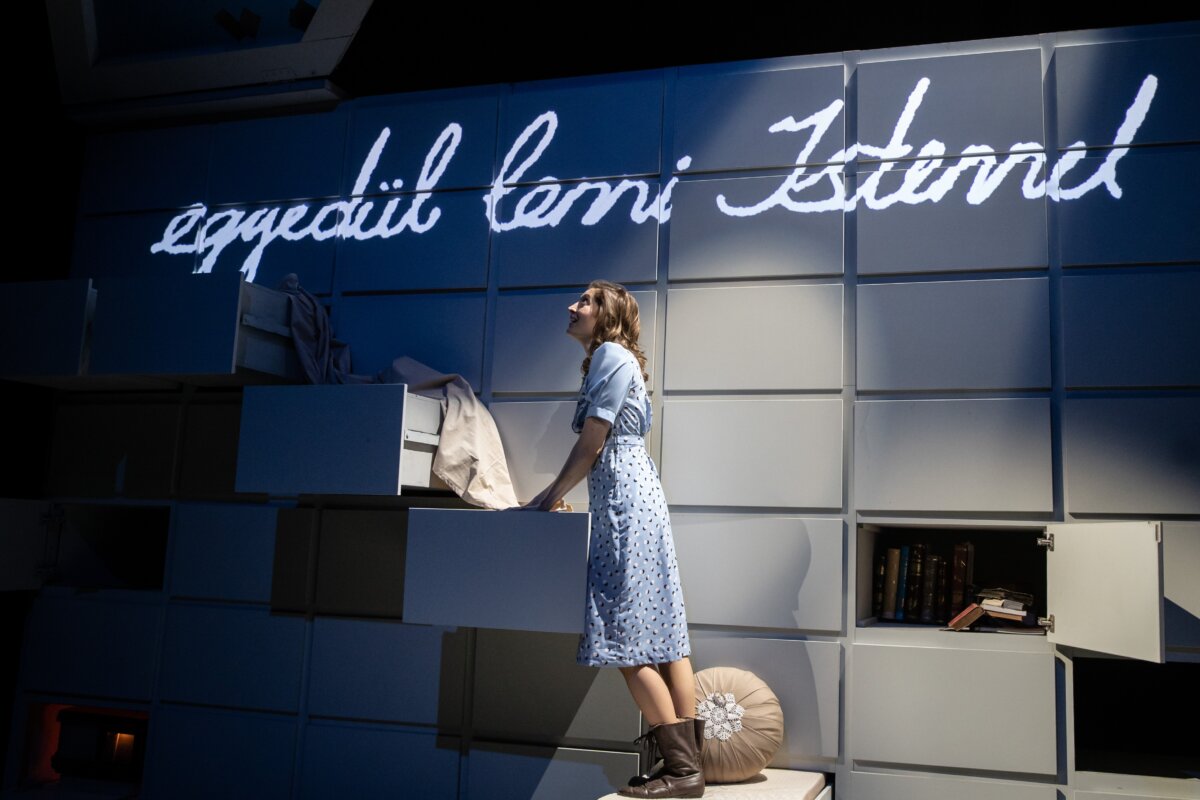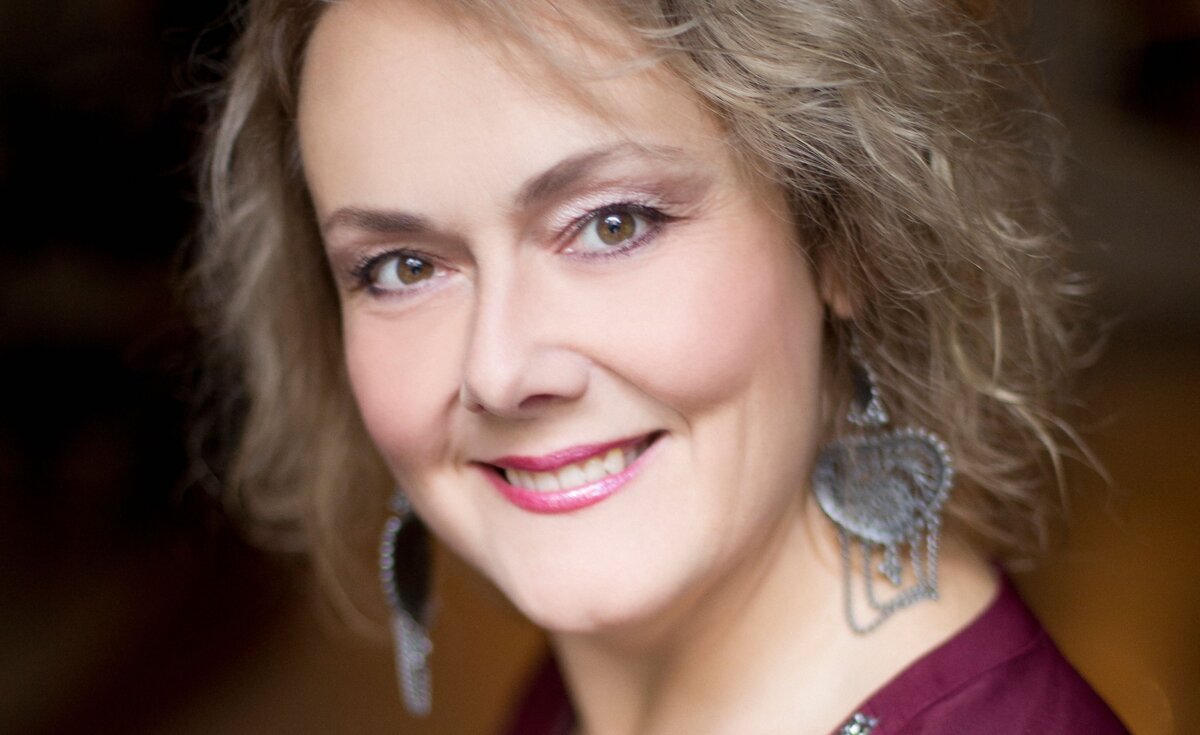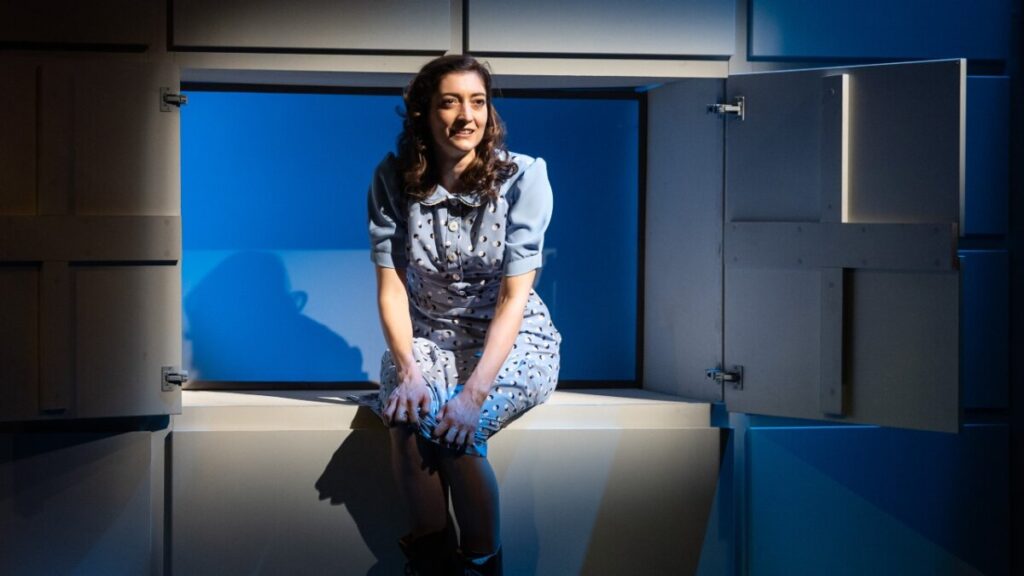A mono-opera rich in new ideas, The Diary of Anne Frank debuted with great success a year ago at the Budapest Operetta Theatre. Director Zoltán Rátóti, production designer Erzsébet Túri, and opera singer Dalma Süle shared their impressions and experiences in connection with a performance of extremely special harmony.
„The invitation to work with the Operetta Theatre caught me by surprise; however, I was very pleased with the assignment, since it proved to be a challenge to present The Diary of Anne Frank through a mono-opera — says director Zoltán Rátóti, according to whom, although there were several outstanding renditions of the story, staging a one-man performance creates entirely new possibilities.
As indicated by the contemporary composer Grigori Frid, the dramaturgy of the mono-opera presents The Diary of Anne Frank in an episodic, mosaic-type way.
„There are many famous monodramas and monologues — continues Zoltán Rátóti —; however, mono-opera as a genre is lesser known. This unique, unusual style has hardly been encountered on the stages of Hungary before.”
„Through the fate of Anne Frank, the diary offers possibilities to process a collective trauma, which have to be dealt with over and over again, because the fact of the Holocaust is such a grave social responsibility that we have not been able to adequately process to this day. We need to remember and be reminded worthily. We have to keep talking about traumas that occur to the society, because unprocessed stories are not erased.”

In terms of the director’s ideas, the performance does not focus on Anne Frank’s sacrificial role, but on the mature-minded, life-affirming teenage girl. We are exposed to the person that Anne Frank used to be before the series of tragedies. „We made conscious efforts not to make the audience confront the shocking state right away, since this girl was a joyful human being with a great sense of humor. The events of the terror have reached her only gradually. We built her character very carefully, in order not to depict her only in a sacrificial role because her story is much more nuanced” — continued Rátóti.
„Anne Frank’s way of seeing things is much more progressive and conscious than that of a typical teenager — adds Dalma Süle who plays Anne. She is extremely rebellious, blessed with a great sense of humour, and she is not afraid to go against the tide. She boldly takes it on when she has to confront social stereotypes, and take a stand against expectations. Anne is far from being a bored person weary of life cowering in a room, but the mono-opera depicts her as a natural life-affirming, and active girl.”

Dalma Süle was young when the invitation reached her. Back then she was unaccustomed to mono-opera as a genre. This was why, as she put it, „the rehearsal process was demanding, but I will cherish being able to play this role as long as I live. Since this is a solo performance, there is no possibility for me to rest.
Both vocal and acting performance are equally important. In short: I may not make any mistake. The role of Anne switches at the most unexpected times from singing voice to talking voice, and vice versa. The music is playing throughout the performance, I need to know all its notes, so I started to study it half a year before the rehearsal process.
For all this, I got the maximum help from my co-creators, and Zoltán Rátóti literally pampered me all the way through” – she adds.
It was Erzsébet Túri who created the multi-dimensional visual world that seems to be a work of fine art, which contributed to the fact that although this is a one-man piece, Süle Dalma, who plays Anne’s role, does not feel alone in any way. „There are so many things going on on the stage, and the rehearsal process took place in an incredibly confidential and positive athmosphere, so it became completely natural that I was alone and my new friends are the props. I don’t even know what would I do if, for example, a soldier, or Peter, Anne’s sweetheart appeared here.”

As regards the visual concepts, Erzsébet Túri disclosed that the diary itself posed quite a challenge to her which presented the world of Anne Frank with beautiful detailing. „I wondered how the diary itself can be displayed in the background. I chose a white wall surface onto which a motion picture can be projected with the details of the diary, and Anne’s handwriting. Opened from the plane of the wall, drawers sometimes become staircases that lead to the sky. Cupboard doors can be opened behind which there are hidden secrets, old objects, clothes, memories of tastes, smiles, and touches. You might as well hide in those drawers, or just lock old things, and bad thoughts in them. This giant cupboard has become the central element that represents the functioning of our minds, the process of recalling memories.”











